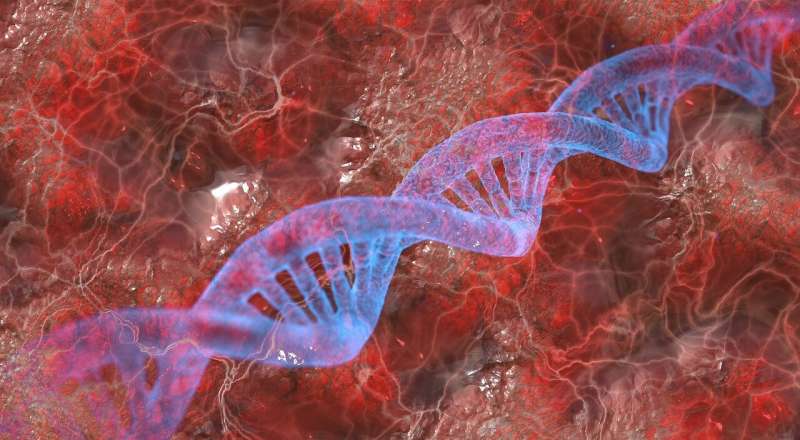Antibiotic resistance from random DNA sequences

An important and still unanswered question is how new genes that cause antibiotic resistance arise. In a new study, Swedish and American researchers have shown how new genes that produce resistance can arise from completely random DNA sequences. The results have been published in the journal PLOS Genetics.
Antibiotic resistance is a major global problem and the spread of resistant bacteria causes disease and death, and constitutes a major cost to society. The most common way for bacteria to develop resistance is by taking up various types of resistance genes from other bacteria. These genes encode proteins (peptides) that can lead to resistance by: (i) deactivating the antibiotic, (ii) reducing its concentration, or (iii) altering the antibiotic's target so that the antibiotic can no longer bind to that target and hence halt the growth of the bacterium. Once resistance genes have arisen, they can quickly spread between different pathogenic bacteria and reduce the effectiveness of our antibiotics. It is therefore important to detect and characterize new resistance genes as quickly as possible—in order to monitor the spread of resistance and also to facilitate treatment and the development of new antibiotics.
To study the emergence of resistance genes, the researchers used laboratory experiments to investigate whether it was possible to generate a gene from random DNA sequences that would give rise to antibiotic resistance. This was done by first designing nearly one billion random DNA sequences that were then placed on a plasmid in the intestinal bacterium Escherichia coli. (Plasmids are DNA molecules that replicate independently and can be transferred from one organism to another.)
These random DNA sequences were then expressed in the bacterium as short peptides. While most of these peptides had no effect on the bacterium at all, six different peptides did, causing the bacterium to become resistant to the antibiotic Colistin, an important antibiotic medication of last resort that is used in severe infections to kill the bacteria by binding to and destroying the bacterium's cell membrane. These peptides caused resistance by increasing the expression of genes that are involved in the modification of the bacterium's cell membrane. This modification of the cell membrane resulted in the antibiotic not being able to bind to cell membrane, and thus not being able to reduce the survival of the bacterium.
"We have now shown in two different studies that random sequences of amino acids can give rise to new functions that are beneficial to the bacterium such as antibiotic resistance. This suggests that the evolution of new functions from random DNA sequences is not as unusual as previously thought," says Dan I. Andersson, Professor in Medical Bacteriology and responsible for the study.
"An important question that remains unanswered and requires further study is whether these new genes are naturally present in bacteria or can only be observed in laboratory experiments," says Michael Knopp, post-doctoral researcher at the Department of Medical Biochemistry and Microbiology and the study's first author.
More information: Michael Knopp et al, A novel type of colistin resistance genes selected from random sequence space, PLOS Genetics (2021). DOI: 10.1371/journal.pgen.1009227
Journal information: PLoS Genetics
Provided by Uppsala University





















